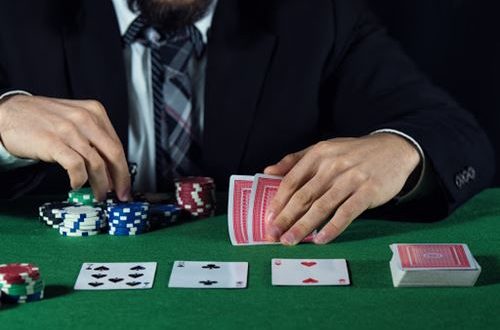The Joker card is a unique and versatile playing card that has captured the imagination of players and artists alike. Introduced in the 19th century as a trump card in the game of Euchre, it has since evolved into a multifaceted symbol used in various card games and cultural references. This article explores the history, joker card balance, and uses of the Joker card in games and popular culture.
The Origins of the Joker Card
The Joker card originated in the United States during the 1860s as part of the Euchre deck, where it served as a wild card, allowing players to substitute it for other cards to create stronger hands. The card’s design has varied widely, but it typically features a jester or clown motif, symbolizing fun and unpredictability.
As card games evolved, the Joker found its way into standard decks of playing cards. Today, most modern decks include one or two Joker cards, though their usage varies depending on the game.
Significance in Card Games
- Wild Card:
In many games, the Joker acts as a wild card, which can represent any other card, enhancing the player’s chances of forming winning combinations. This characteristic adds an element of strategy and excitement, as players must decide when to use the Joker for maximum advantage. - Unique Rules:
Different card games have their own specific rules regarding the Joker. For example, in games like Rummy or Canasta, the Joker can be used as a substitute for any card, while in games like Poker, the Joker might have a limited role or no role at all, depending on house rules. - Trick-Taking Games:
In trick-taking games, the Joker may serve as the highest trump card, capable of winning any trick if played correctly. This role enhances the card’s importance in strategy and gameplay.
The Joker in Popular Culture
The Joker card has transcended its role in games, becoming a powerful symbol in popular culture and entertainment. Here are a few notable representations:
- The Joker Character:
Perhaps the most famous association with the Joker is the iconic DC Comics character, the Joker, who serves as Batman’s archenemy. This character embodies chaos and unpredictability, much like the card itself. Various adaptations in movies, television shows, and comic books have portrayed the Joker as a complex villain, further solidifying the card’s cultural significance. - Art and Symbolism:
The Joker is often used in art and literature to symbolize unpredictability, trickery, or the duality of human nature. Its jester-like imagery conveys themes of humor and folly, often contrasting with serious subjects. - Games and Media:
The Joker card appears in various video games, board games, and online platforms. Its presence often adds an element of surprise and excitement, resonating with players who enjoy the thrill of chance.
Conclusion
The Joker card stands out as a fascinating element in the world of playing cards and beyond. With its origins in 19th-century American card games, it has evolved into a symbol of versatility and unpredictability. Whether acting as a wild card in gameplay or representing chaos in popular culture, the Joker continues to captivate and inspire players and artists alike. As card games and entertainment evolve, the Joker card remains a timeless icon, reminding us of the thrill of chance and the unpredictable nature of life itself.
